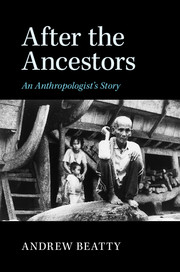Book contents
- Frontmatter
- Epigraph
- Contents
- List of illustrations
- Preface
- People
- Map
- Prologue
- 1 The statue
- 2 House key
- 3 Among women
- 4 Blood brothers
- 5 Daggers and debutants
- 6 Stormy Sunday
- 7 Three things that matter
- 8 The making of great men
- 9 A game of chess
- 10 Cholera song
- 11 Progress
- 12 Brothers and strangers
- 13 Exile and return
- 14 Field work
- 15 The chicken's neck
- 16 Good deaths and bad deaths
- 17 First family
- 18 Blessing
- 19 Half an egg
- 20 Waiting
- 21 Death of a chief
- 22 Ama Jonah at bay
- 23 Unravelling
- 24 The ethnographer and his double
- Epilogue
- Index
22 - Ama Jonah at bay
Published online by Cambridge University Press: 05 March 2015
- Frontmatter
- Epigraph
- Contents
- List of illustrations
- Preface
- People
- Map
- Prologue
- 1 The statue
- 2 House key
- 3 Among women
- 4 Blood brothers
- 5 Daggers and debutants
- 6 Stormy Sunday
- 7 Three things that matter
- 8 The making of great men
- 9 A game of chess
- 10 Cholera song
- 11 Progress
- 12 Brothers and strangers
- 13 Exile and return
- 14 Field work
- 15 The chicken's neck
- 16 Good deaths and bad deaths
- 17 First family
- 18 Blessing
- 19 Half an egg
- 20 Waiting
- 21 Death of a chief
- 22 Ama Jonah at bay
- 23 Unravelling
- 24 The ethnographer and his double
- Epilogue
- Index
Summary
The chief dead, conflict must follow. This was not the invariable rule of succession, but old quarrels combined with new motives now threatened the peace of the village. Although the chief's authority at the end had been nominal, his presence had given the village stability; he was a moral anchor. That glare of his – that superb indifference – held the world back, made it insignificant. Without him, who could say? Perhaps Ama Gamböta's nightmare of a world in which everything was permitted would come true. The “wreckers” of whom he had spoken on the night of the Chicken's Neck would return: maybe they were already in our midst. The only thing clear was that the rules, the way things were done, would change as the new men emerged. Land, leadership, ancestral power, church and state: all these must now appear in a new light.
But before the unravelling, a moment of comedy.
With funds from the bishop – and an extravagance I could never have dared allow myself – the new priest had gone on a month-long trip to East Java, where three years earlier he had been ordained. From Medan – half-way home – he sent word that he was returning with a wife. His entourage arrived one evening, his Javanese wife carried by six men on a raft above their heads. She lay back in her straw hat and sunglasses, rocking to the motion, her head nodding queasily, her hands clinging to the raft. Among the village girls, at least, her arrival caused a stir; they buzzed about her excitedly, giggling and pulling each other's elbows, commenting on her town hair, her white handbag and shoes. At the sound of their screams, the welcoming committee swung into action. A gong was beaten, a pig tethered for slaughter, and the little party was cheered to the Place of Torture.
Eager to please, the church elders had spent the day collecting donations for the welcome-pig – a sow supplied “without profit” by the religious teacher – and this the priest took as his due.
- Type
- Chapter
- Information
- After the AncestorsAn Anthropologist's Story, pp. 320 - 340Publisher: Cambridge University PressPrint publication year: 2015

